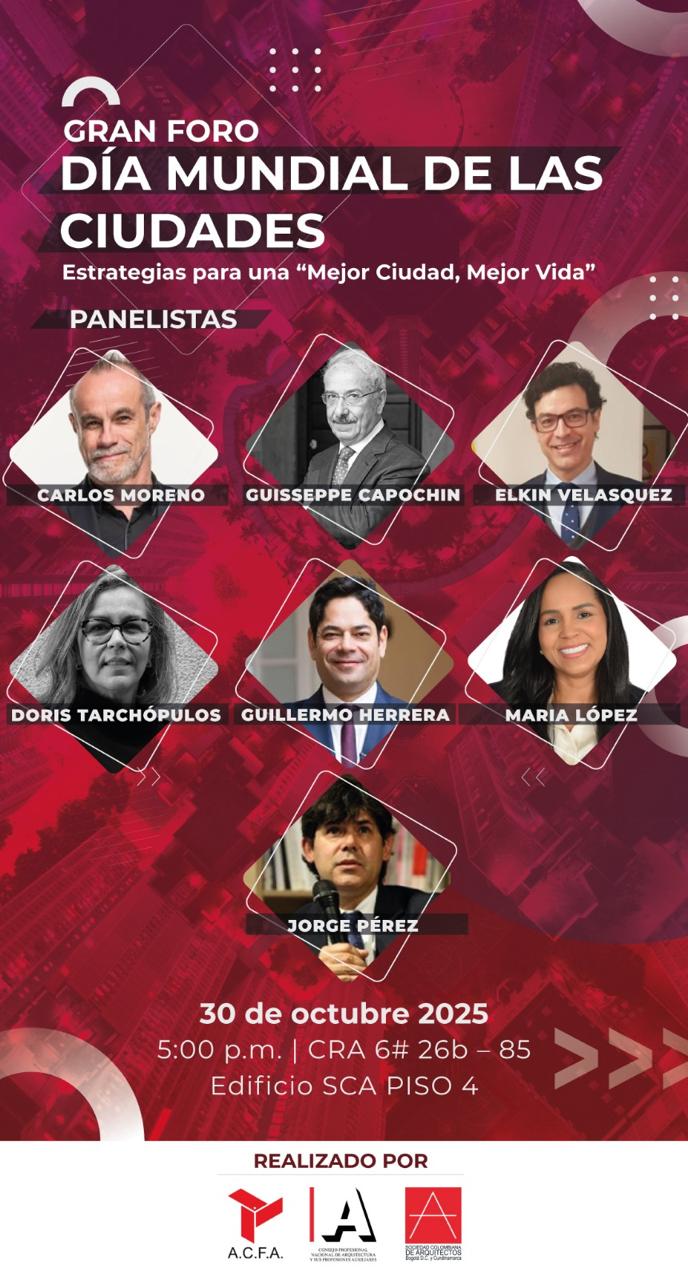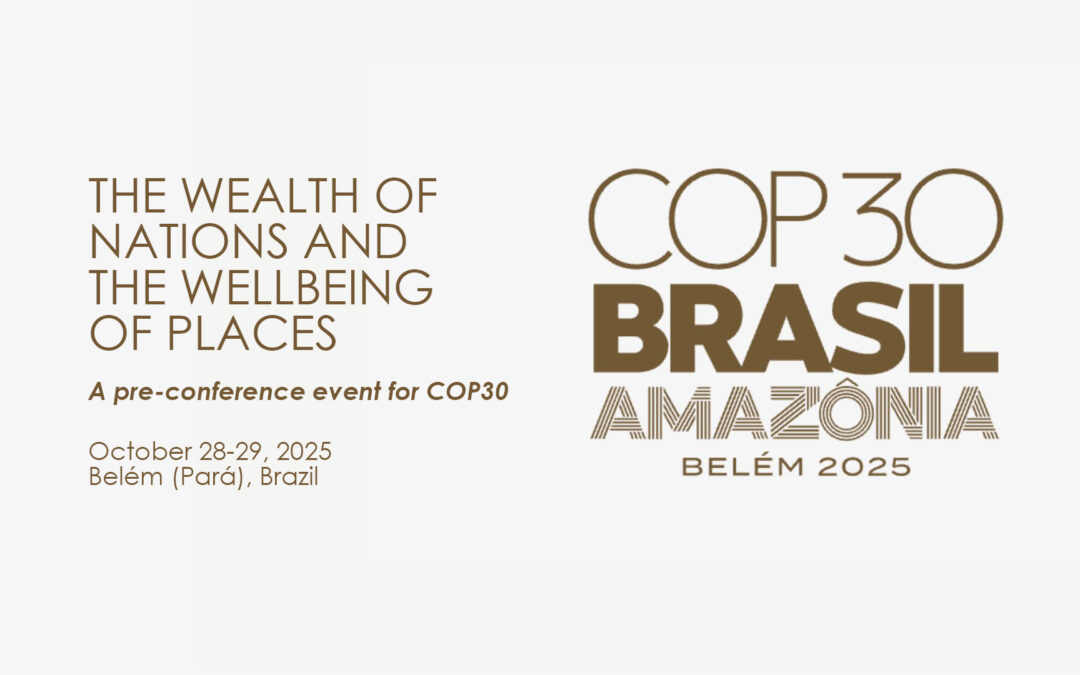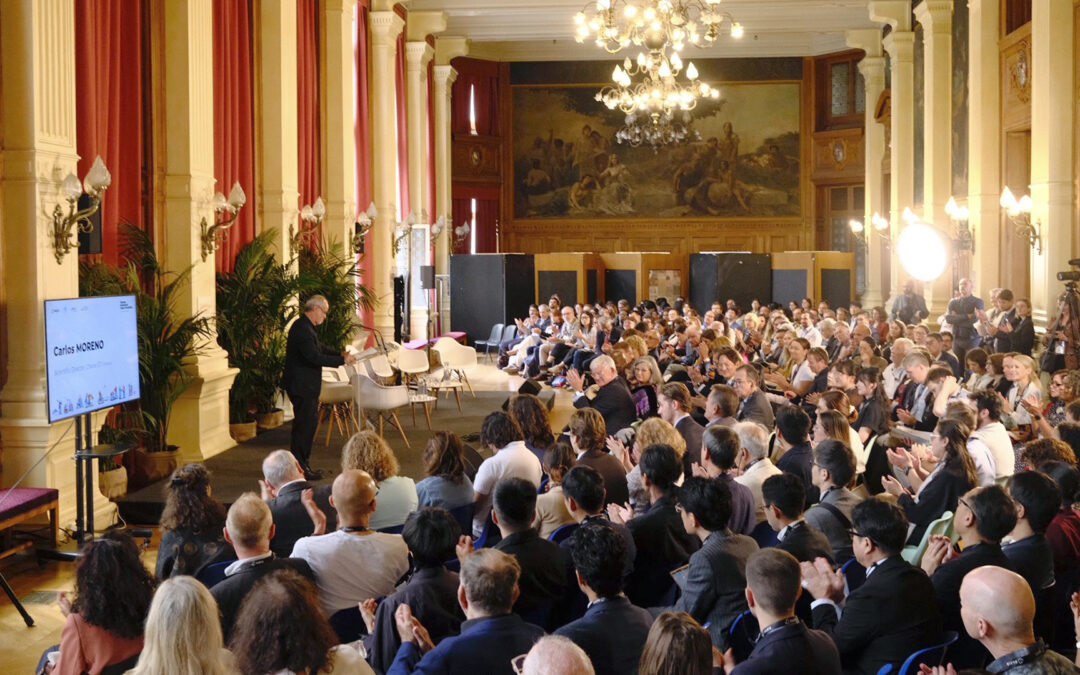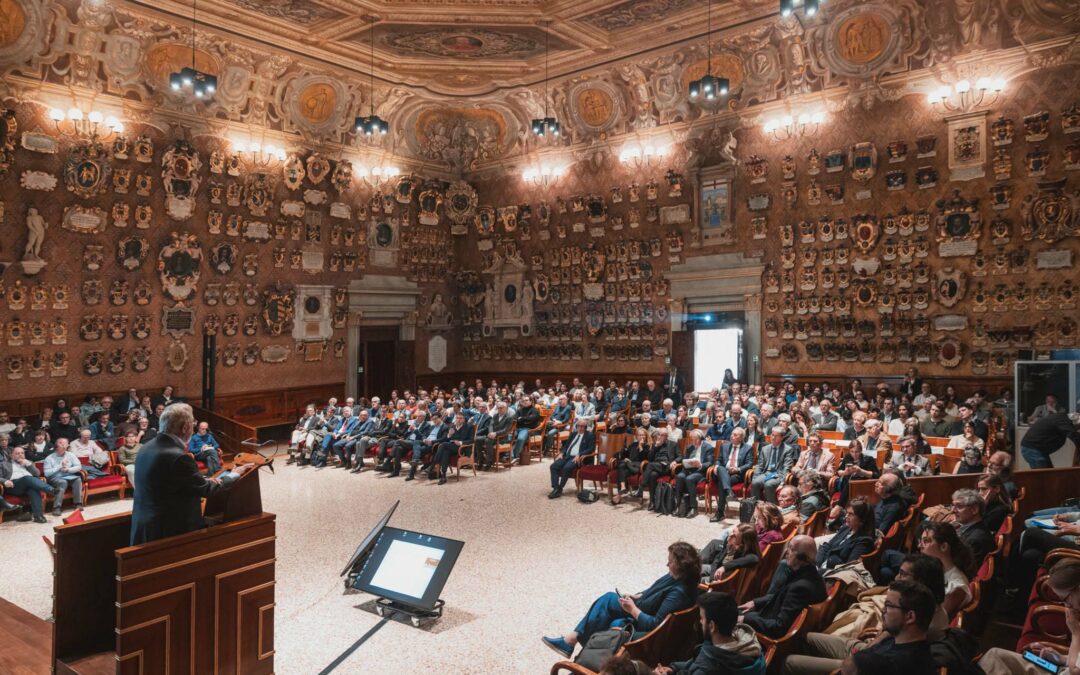
Gran Foro. Dia mundial de las ciudades




October 28-29, 2025
Auditorium, Institute of Applied Social Sciences
Belém (Pará), Brazil
Lessons for High Quality and Sustainable Development of our Planet and the Amazon Region
A pre-conference event for COP30, Belem
The Postgraduate Program in Economics(PPGE) of the Federal University of Pará is collaborating with a group of renowned professors and researchers from abroad and Brazil so as to discuss the new forms and directions that economic and social well-being and its academic orientation will take, with a view to global warming and ongoing climate change. In this context, the PPGE brings together international and national experts in a dialogue event to discuss the various global trends that will influence the economic and social performance of our world, including developing countries and the Amazon area.
This climate change initiative started in February, 2025, following an Estafette Model of scientific meetings in different places in the world, coordinated by The Regional Science Academy (TRSA) and the Federal University of Pará in Belem, Brazil.
This international dialogue on THE WEALTH OF NATIONS AND THE WELLBEING OF PLACES is the closing part of this global initiative which unfolded in several events and written outputs.The intention is to hand over the manifesto with conclusions and recommendations to the authorities of COP30 to be held in Belém in the second part of November, 2025
Honorary speakers:
Paul Krugman, Nobel Laureate 2008, CUNY, New York
Erasmus University, Rotterdam
Peter Nijkamp, University College Wroclaw (WSKZ), Wroclaw- Erasmus University, Rotterdam – SPPM, Tsinghua University, Beijing
Karima Kourtit, Open University. Heerlen – University College Wroclaw (WSKZ), Wroclaw – Erasmus University, Rotterdam
Carlos Moreno, IAE Paris-Sorbonne, Paris – UN-Habitat
Carlos Roberto Azzoni, FEA-USP, São Paulo

September 4–5, 2025
The National Council of Architects, Planners, Landscape Architects and Conservators (CNAPPC) and its Scientific Committee took an active part in the two-day International Conference on Urban Sustainable Proximities, held in Paris on September 4 and 5, 2025.
On September 4, the opening session took place at the Académie du Climat, an emblematic venue for ecological and civic transition, where new perspectives on proximity as a driver of sustainable urban transformation were discussed.
Following this event, the CNAPPC and its Scientific Committee were received at the Hôtel de Ville de Paris by Ana Claudia Rossbach, Executive Director of UN-Habitat. On this occasion, she formally invited the CNAPPC to present its Manifesto – Decalogue on Territorial Proximity at the upcoming 12th World Urban Forum in Baku.
Later in the afternoon, a meeting was held in the prestigious setting of the Institut de France with academician Jacques Rougerie, the renowned architect and oceanographer, who laid the groundwork for future cooperation with the Académie des Beaux-Arts and the Fondation Jacques Rougerie. As a reminder, the Villa Medici in Rome – a historic hub of creation and cultural exchange – also falls under the auspices of the Institut de France and its Académie des Beaux-Arts.
On September 5, the conference continued in the historic Lefebvre amphitheater, where Marie Curie gave her very first university lecture in 1906, thus becoming the first woman to teach at a French university.
That day, CNAPPC President Massimo Crusi and Giuseppe Cappochin, Head of the Department for Territorial Reform, spoke alongside the President of the Scientific Committee, Professor Carlos Moreno, together with several colleagues and partners: Catherine Gall, Matteo Colleoni, Pia Fontana, Karim Kourtit, Nuno Valentim, Peter Nijkamp, Polish Mayor Arkadiuz Ptak, and architect Philippe Rahm. Together, they presented ongoing reflections on proximity as a key principle in shaping future urban and territorial policies.
In the same amphitheater, Giuseppe Cappochin and Professor Matteo Colleoni shared the book Italy in Proximity, contributing to the academic and professional debate, and officially announced the launch of the Scientific Committee’s website.
The day also featured a working meeting with Christophe Millet, President of the French National Council of the Order of Architects (CNOA), and its Director General, Marie-Aude Bailly-Le Bar, to explore avenues for strengthening cooperation between Italian and French peers.
Finally, on September 5, the day concluded with the in-person meeting of the Scientific Committee, dedicated to advancing its ongoing work and outlining the new actions planned for the end of 2025 and the beginning of 2026.
All these moments highlight the international dynamism of the CNAPPC and confirm the pivotal role of its Scientific Committee in building partnerships of excellence and promoting urban and territorial proximities as innovative responses to the challenges of our time.




International Conference on Sustainable Urban Proximities
4th – 5th September 2025
Paris City Hall / Sorbonne University
Paris, France
Read the program

On Friday, April 4, the University of Padua hosted a landmark international symposium titled “The Wealth of Nations and the Role of Architecture for an Urban Economy Focused on Human Well-Being,” organized by the Italian National Council of Architects, Planners, Landscapers and Conservators (CNAPPC). The event featured Nobel Prize-winning economist Paul Krugman, who delivered a powerful and timely keynote address.
A Thoughtful Institutional Opening
The symposium began with institutional greetings from key figures in academia and government: Antonio Parbonetti (Vice-Rector of the University of Padua), Paola Valbonesi (Director of the Department of Economics and Business Sciences “Marco Fanno”), Andrea Micalizzi (Deputy Mayor of Padua), and Roberto Righetto (President of FOAV and the local Order of Architects). Massimo Crusi, CNAPPC President, formally opened the event, followed by remarks from Senator Roberto Rosso, rapporteur of the new Urban Regeneration Law.
Paul Krugman: “Stable Cities, Stable Nations”
At 3:15 PM, Paul Krugman took the stage with a lecture titled “On the Stability of the Deplorables,” reflecting on the economic structures that can either deepen urban inequality or unlock inclusive growth. Krugman emphasized the need for urban planning that places human dignity, accessibility, and local resilience at the center of economic development.
Urban Challenges and Future Visions
The first thematic session, led by Catherine Gall (Executive Director of ETI Research, Sorbonne Paris), addressed contemporary struggles in urban life and governance:
After a short coffee break, the second session, titled “What Kind of Cities Do We Want to Live In?”, opened with a series of thought-provoking talks:
A Forum with Impact
With over a hundred in-person attendees and a wide online audience, the event marked a significant moment in the evolving conversation about sustainable, human-centered urbanism. It made clear that architecture, economics, and policy must work hand in hand to shape cities that are resilient, inclusive, and designed for everyday life.

November 2024 marked a month rich in international engagements for the CNAPPC, which was prominently involved in several key events abroad.
At the beginning of the month, the “Exploring Proximity – for the Future of Urban and Territorial Development” event, held in Cairo during the 12th World Urban Forum organized by UN-Habitat – where President Massimo Crusi and Councillor Giuseppe Cappochin participated – provided an opportunity for the presentation of the “Italy in Proximity: The Future of Urban and Territorial Planning” publication.
The publication, developed by the CNAPPC’s Scientific Committee under the scientific direction of Professor Carlos Moreno — creator of the “15-minute city” model — was presented to an international audience as a declaration of the Architects PPC’s commitment to realise a vision of urban regeneration in our cities, imagining other ways of living, moving and working, based on innovative paradigms of territorial governance centred on the principle of “sustainable proximity”.
Participating in the UIA International Forum held in Kuala Lumpur, which focused on the theme “DIVERSECITY” allowed President Massimo Crusi, along with Councillors Lilia Cannarella, Marcello Rossi, and Diego Zoppi, to take part in a global collective dialogue on the role of architects within current economic, social, and environmental contexts, emphasizing the importance of architecture, urban planning, and design perspectives.
Taking Kuala Lumpur as a starting point, as a multicultural Asian city through the lens of cultural identity, the Forum examined an updated interpretation of the notion of cultural identity in cities, that has gained visibility and expression with the rise of modernism and the beginning of a globalized architectural communication culture throughout the 20th century.
After the Forum, the two-day UIA General Assembly brought many issues relating to the new governance of this important international body to the attention of the Delegates’ Assembly.
The CNAPPC also contributed to the “New European Bauhaus: Heritage & Transformation” European Conference, organized by ACE-CAE in collaboration with Europa Nostra, the European Heritage Hub, and other associations.
In Kraków, Councillor Diego Zoppi delivered a talk on “Innovation for the City and Historical Building: the relationship between technology and historic cities, and between new technologies and the restoration of historic buildings.” This topic is particularly sensitive, as, on an urban level, historic urban centres are often subject to mono-functional uses oriented toward tourism and leisure — the result of mass communication tools that reduce the urban dimension to a commercial one. At the same time, historic building heritage — realised with techniques and principles vastly different from those used today — risks being seriously altered or simplified when approached through contemporary methods rooted in digital tools, increasingly industrialized interventions, and standardized procedures.
It is worth emphasizing that our country is universally recognized as a cultural reference point for its approach to the conservation and enhancement of historic buildings, and their integration into the fabric of contemporary cities, preserving not only their testimonial value, but also the identity of our cities.